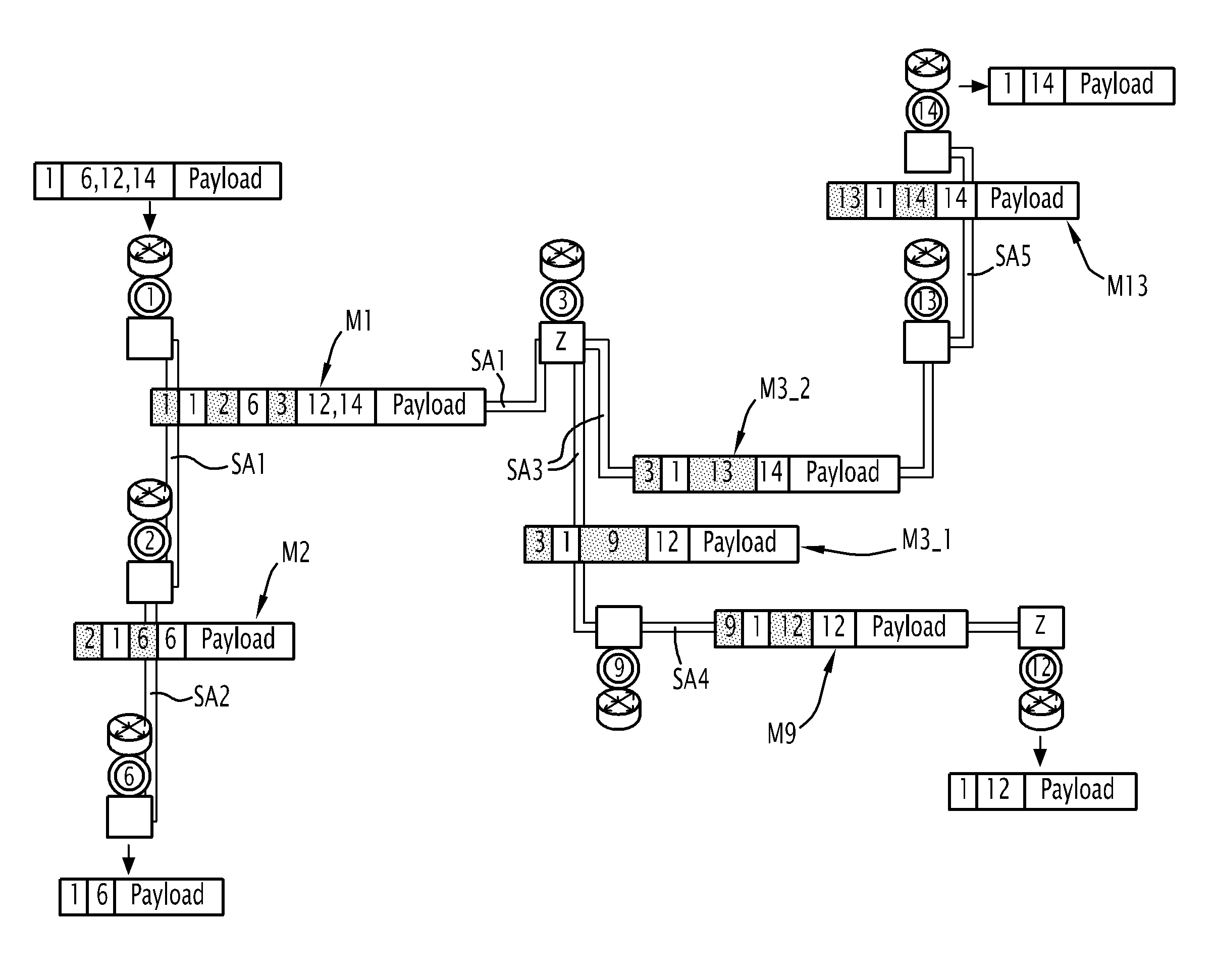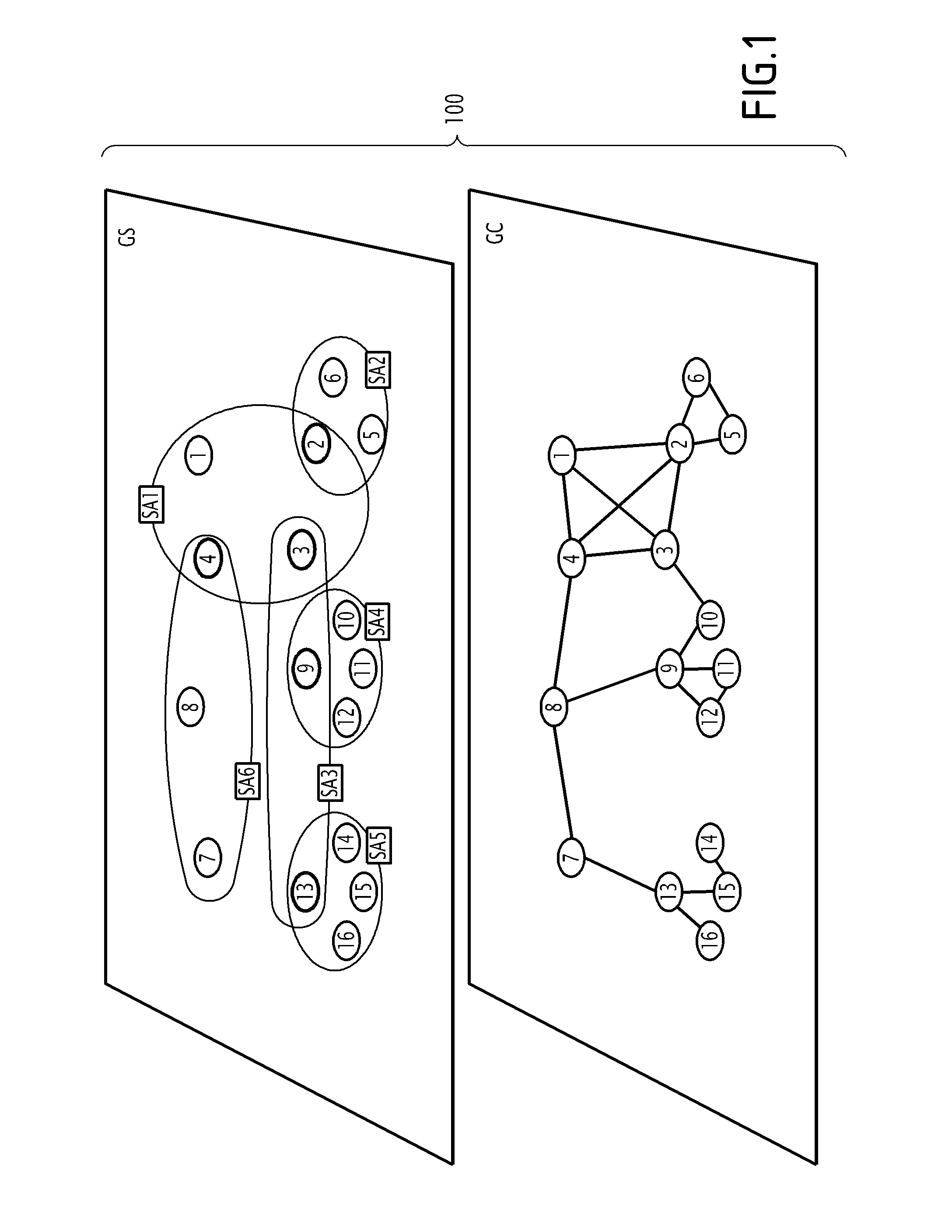Method for the secure exchange of data over an ad-hoc network implementing an Xcast broadcasting service and associated node
a technology of ad-hoc networks and data exchange, applied in the field of ad-hoc network security, can solve the problems of reducing performance, reducing the security of ad-hoc network, and a significant challenge in securing xcast broadcasting mod
- Summary
- Abstract
- Description
- Claims
- Application Information
AI Technical Summary
Benefits of technology
Problems solved by technology
Method used
Image
Examples
Embodiment Construction
[0030]FIG. 1 represents a network 100.
[0031]The network 100 is an ad-hoc radio network implementing an Xcast broadcasting service.
[0032]The network 100 has M nodes. In FIG. 1, the network 100 includes 16 nodes.
[0033]Each node constitutes, for an associated application, an access point for accessing the network 100.
[0034]In particular, the node 3 constitutes an access point for a network administration application network for administering the network 100.
[0035]At the level of a communication layer, the network 100 is described by way of a communication topology, which is defined by a communication graph GC.
[0036]The chart GC includes M nodes connected by p links.
[0037]A link between two nodes of the chart GC corresponds to the establishment of a bidirectional radio communication link between these two nodes.
[0038]Depending upon the characteristic features of each link (communication protocol implemented, wired connection or radio link, frequency used, etc), the network 100 may be su...
PUM
 Login to View More
Login to View More Abstract
Description
Claims
Application Information
 Login to View More
Login to View More - R&D
- Intellectual Property
- Life Sciences
- Materials
- Tech Scout
- Unparalleled Data Quality
- Higher Quality Content
- 60% Fewer Hallucinations
Browse by: Latest US Patents, China's latest patents, Technical Efficacy Thesaurus, Application Domain, Technology Topic, Popular Technical Reports.
© 2025 PatSnap. All rights reserved.Legal|Privacy policy|Modern Slavery Act Transparency Statement|Sitemap|About US| Contact US: help@patsnap.com



